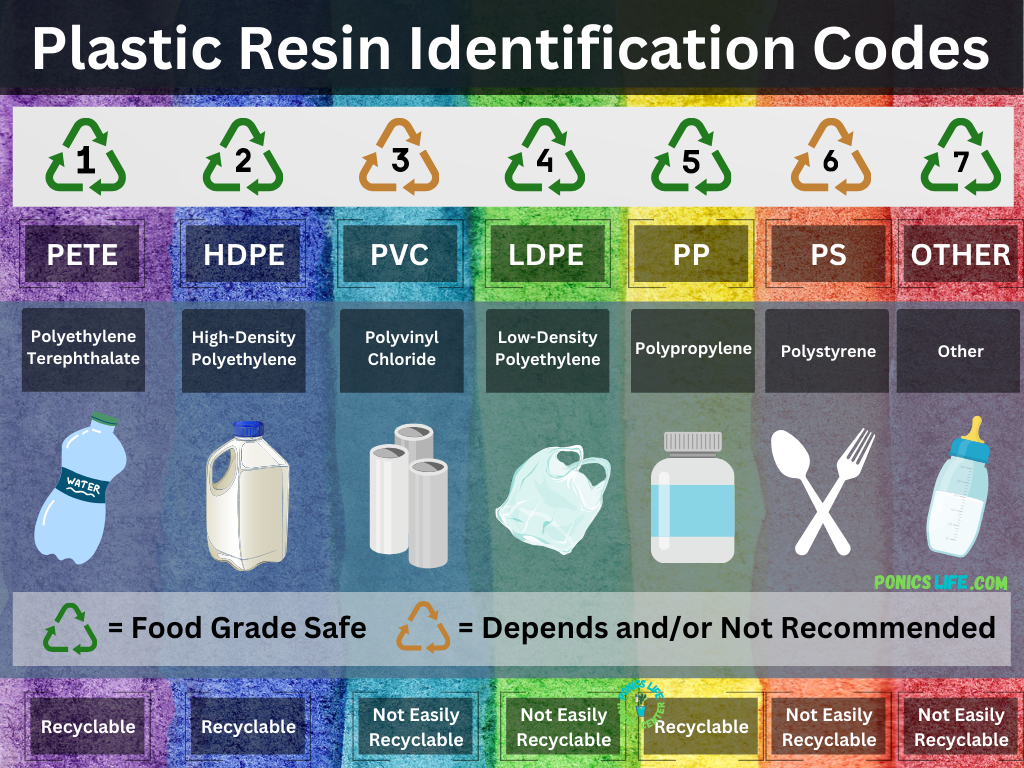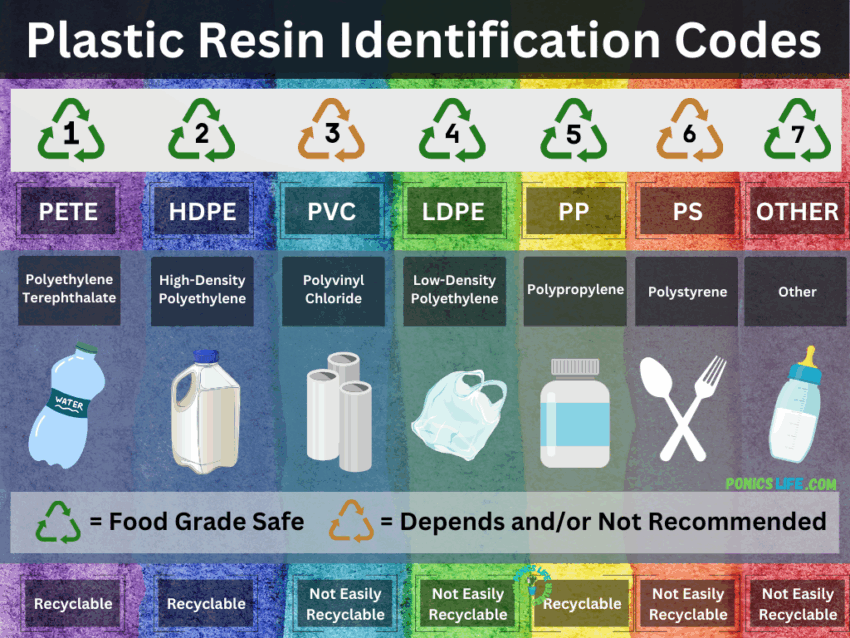
Decoding the Food Grade Plastic Symbol: A Comprehensive Guide
In today’s world, plastic is ubiquitous. From food containers to water bottles, we encounter it daily. But how do we know if the plastic we’re using is safe for food contact? The answer lies in understanding the food grade plastic symbol. This symbol, often overlooked, is a crucial indicator of whether a plastic material is safe for use with food and beverages. This comprehensive guide will delve into the intricacies of the food grade plastic symbol, its meaning, and its importance in ensuring food safety. Let’s explore the world of food grade plastic and the symbols that keep us safe. Understanding these symbols is fundamental for both consumers and businesses alike. This knowledge helps prevent potential health risks associated with using unsuitable plastics for food storage or preparation.
What is Food Grade Plastic?
Food grade plastic refers to plastic materials that are deemed safe for contact with food and beverages. These plastics are manufactured under strict regulations to minimize the risk of harmful chemicals leaching into the food. The term “food grade” signifies that the plastic has met specific standards set by regulatory bodies like the Food and Drug Administration (FDA) in the United States and similar organizations worldwide. These regulations ensure that the plastic doesn’t contaminate food with harmful substances. The key difference between food grade plastic and non-food grade plastic is the level of purity and the types of additives used during manufacturing. Non-food grade plastics may contain chemicals that are harmful if ingested, even in small amounts.
Understanding the Food Grade Plastic Symbol
The food grade plastic symbol is typically represented by a fork and a glass, often found on the bottom or side of plastic containers. This symbol indicates that the plastic is suitable for contact with food. However, the presence of this symbol alone isn’t a guarantee of safety. It’s essential to understand the different types of plastics that are considered food grade and their specific properties.
Common Types of Food Grade Plastics
- Polyethylene Terephthalate (PET or PETE): Commonly used for water bottles and beverage containers. PET is recyclable but not intended for reuse.
- High-Density Polyethylene (HDPE): Found in milk jugs, detergent bottles, and some food storage containers. HDPE is considered one of the safest plastics.
- Polyvinyl Chloride (PVC): Less common in food packaging due to potential health concerns, but sometimes used in cling wrap.
- Low-Density Polyethylene (LDPE): Used in plastic bags and squeezable bottles. LDPE is flexible and relatively safe.
- Polypropylene (PP): Often used for yogurt containers, microwaveable food containers, and reusable food storage containers. PP is heat-resistant and durable.
- Polystyrene (PS): Commonly known as Styrofoam, used for disposable cups and take-out containers. PS can leach styrene, especially when heated.
- Polycarbonate (PC): Used in some reusable water bottles and food containers. PC contains Bisphenol A (BPA), which has raised health concerns. Many manufacturers now offer BPA-free alternatives.
The Importance of Food Grade Plastics
Using food grade plastic is crucial for several reasons. Primarily, it protects consumers from potential health risks associated with chemical leaching. Non-food grade plastic can release harmful substances into food, especially when exposed to heat or acidic conditions. These substances can include endocrine disruptors, carcinogens, and other toxins that can negatively impact human health. Furthermore, food grade plastics are designed to maintain the quality and freshness of food. They provide a barrier against oxygen, moisture, and other contaminants that can cause spoilage. This helps extend the shelf life of food products and reduces food waste. [See also: Best Practices for Food Storage Safety]
Regulations and Standards
The production and use of food grade plastic are governed by strict regulations and standards. In the United States, the FDA sets guidelines for materials that come into contact with food. These guidelines specify the types of plastics that are approved for food contact, as well as the allowable levels of additives and contaminants. Similarly, the European Union has its own regulations, such as the Regulation (EC) No 1935/2004, which ensures that materials intended to come into contact with food do not endanger human health or bring about an unacceptable change in the composition of the food. Compliance with these regulations is essential for manufacturers to ensure the safety and quality of their products. Regular testing and certification are required to demonstrate that plastics meet the necessary standards. The food grade plastic symbol acts as a visual cue that these regulations have been met.
Identifying Food Grade Plastic
While the food grade plastic symbol is a helpful indicator, it’s not the only way to identify food grade plastic. Here are some additional tips:
- Check the Label: Look for labels that specifically state “food grade” or “safe for food contact.”
- Look for Recycling Codes: The recycling code (the number inside the triangle) can provide information about the type of plastic. Some plastics, like HDPE and PP, are generally considered safer for food use.
- Avoid Damaged Plastics: Do not use plastics that are cracked, scratched, or discolored, as these may leach chemicals more easily.
- Consider the Intended Use: Use plastics only for their intended purpose. For example, don’t microwave food in containers that are not labeled as microwave-safe.
- Research the Manufacturer: Choose products from reputable manufacturers who adhere to strict quality control standards.
Potential Risks and Concerns
Despite the regulations and standards in place, there are still potential risks associated with using food grade plastic. One of the main concerns is the leaching of chemicals, particularly when plastics are exposed to heat, acidic foods, or prolonged use. Some chemicals, like BPA and phthalates, have been linked to endocrine disruption and other health problems. While many manufacturers have phased out BPA, it’s still important to be aware of the potential risks. Another concern is the environmental impact of plastic waste. While many food grade plastics are recyclable, not all of them are actually recycled. This can lead to plastic pollution and other environmental problems. [See also: The Environmental Impact of Plastic Packaging]
Best Practices for Using Food Grade Plastic
To minimize the risks associated with using food grade plastic, follow these best practices:
- Choose Safer Plastics: Opt for plastics like HDPE and PP whenever possible. These are generally considered safer for food contact.
- Avoid Heating Plastics: Do not microwave food in plastic containers unless they are specifically labeled as microwave-safe.
- Wash Plastics Properly: Wash plastic containers thoroughly with soap and water, but avoid using harsh detergents or abrasive cleaners.
- Replace Old Plastics: Replace plastic containers that are scratched, cracked, or discolored.
- Store Food Properly: Store food in appropriate containers and avoid prolonged contact with plastic, especially for acidic foods.
- Recycle When Possible: Recycle food grade plastics whenever possible to reduce environmental impact.
- Consider Alternatives: Explore alternative materials like glass, stainless steel, and silicone for food storage and preparation.
The Future of Food Grade Plastics
The future of food grade plastics is likely to be shaped by increasing concerns about sustainability and health. Researchers are actively developing new types of plastics that are biodegradable, compostable, and made from renewable resources. These bio-based plastics offer a more sustainable alternative to traditional petroleum-based plastics. In addition, there is a growing focus on reducing the use of harmful chemicals in plastic manufacturing. Manufacturers are working to develop plastics that are free of BPA, phthalates, and other substances of concern. The food grade plastic symbol may evolve to reflect these changes, with new symbols or labeling systems to indicate the sustainability and safety of plastic materials. The ultimate goal is to create a food packaging system that is both safe for consumers and environmentally responsible. The future of food grade plastic lies in innovation and a commitment to sustainability.
Conclusion
Understanding the food grade plastic symbol and the properties of different types of food grade plastics is essential for ensuring food safety and minimizing potential health risks. By following best practices for using food grade plastic and staying informed about the latest developments in plastic technology, consumers can make informed choices about the materials they use for food storage and preparation. While food grade plastic offers many benefits, it’s important to be aware of the potential risks and to take steps to mitigate them. As technology advances, we can expect to see even safer and more sustainable options for food grade plastic, contributing to a healthier and more environmentally friendly future. The food grade plastic symbol is a small but significant reminder of the importance of food safety in our daily lives. Always look for the food grade plastic symbol when choosing containers for your food and drinks. Remember that being informed is the best way to protect yourself and your family.
